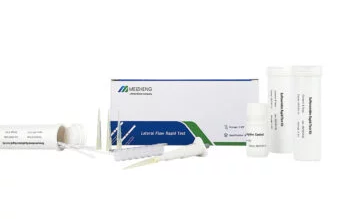Essential Steps to Secure Long-Term Disability Benefits: Insights from Experts

Navigating the process of securing long-term disability benefits can feel overwhelming. With layers of paperwork, strict deadlines, and legal requirements, it’s easy to feel lost. However, taking the proper steps and understanding what is expected can significantly increase your chances of success. Among these steps, having a well-documented attending physician statement is one of the most critical components. This article delves into expert insights to guide you through securing the benefits you deserve.
Understanding the Application Process
The first step in securing long-term disability benefits is understanding the application process thoroughly. This involves more than simply filling out forms; it’s about presenting a clear and compelling case demonstrating your inability to work due to a medical condition. Insurance companies scrutinize every detail of your application, which makes accuracy and completeness essential.
Start by gathering all necessary documents, including medical records, employment history, and evidence of how your condition impacts your ability to perform job duties. These records should paint a cohesive picture of your situation. It’s not enough to state that you’re unable to work; you need to provide proof that aligns with the policy’s definition of disability. Reviewing your insurance policy’s terms can help you understand the required evidence.
Moreover, many applicants find it beneficial to consult with a legal or medical expert during this stage. Professionals familiar with the process can help ensure your application meets the insurer’s expectations. This proactive approach reduces the chances of rejection based on technicalities or incomplete information.
The Role of Medical Evidence
Medical evidence serves as the foundation of any disability claim. Without clear documentation, proving your case to the insurance company becomes difficult. This is where the attending physician’s statement plays a vital role. Your doctor’s insights into your medical condition, prognosis, and limitations provide the core evidence needed to support your claim.
When working with your physician, ensure they understand the importance of detailed and accurate documentation. Vague or incomplete statements can weaken your application, leading to delays or denials. A strong attending physician statement will address your diagnosis, symptoms, and how these impair your ability to perform essential job functions. Additionally, it should be consistent with the rest of your medical records, leaving no room for discrepancies.
It’s also worth noting that insurance companies often have their medical reviewers who may attempt to discredit your claim. Ensuring your medical records are robust and free of inconsistencies can counteract these efforts. If your doctor is willing, they can provide additional explanations or respond to insurer queries to further strengthen your case.
Overcoming Challenges in the Approval Process
Even with a well-prepared application, challenges may arise during the approval process. Insurance companies are businesses, and minimizing payouts is often in their interest. As a result, your claim may face scrutiny, or you could receive requests for additional information.
Staying organized and responsive is key to overcoming these hurdles. Keep track of deadlines, correspondence, and submitted documents. Any delay in providing the requested information can prolong the process or jeopardize your claim. Consider keeping a detailed log of your interactions with the insurer, including dates, names, and the nature of each communication.
Legal representation can also be a significant asset when challenges arise. Disability attorneys specialize in navigating complex claims and can advocate on your behalf. Whether appealing a denial or negotiating with the insurer, having an experienced professional in your corner can make a difference in the outcome.
Conclusion
Securing long-term disability benefits requires careful planning, attention to detail, and perseverance. From submitting an airtight application to ensuring the accuracy of your attending physician statement, each step plays a pivotal role in the success of your claim. While the process may seem daunting, understanding what is expected and seeking expert guidance can help you confidently navigate it. By taking these essential steps, you can increase your chances of receiving the support you need during challenging times.





